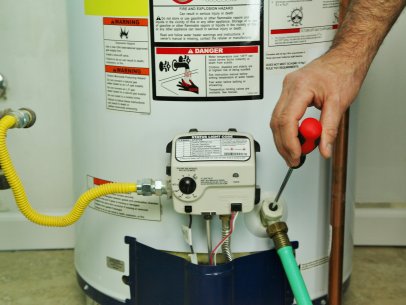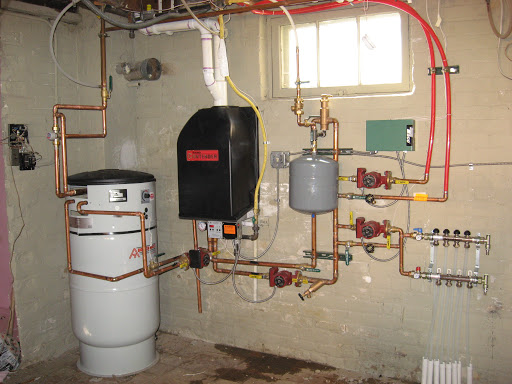How to Maintain Your Home's Hot Water System Effectively
How to Maintain Your Home's Hot Water System Effectively
Blog Article
What are your thoughts about Tips on Maintaining a Water Heater?

Warm water is important for day-to-day comfort, whether it's for a rejuvenating shower or cleaning dishes. To guarantee your warm water system runs effectively and lasts much longer, routine upkeep is key. This post supplies practical suggestions and understandings on how to preserve your home's warm water system to avoid disturbances and costly repair services.
Introduction
Preserving your home's warm water system might appear daunting, but with a few straightforward steps, you can guarantee it runs smoothly for many years ahead. This guide covers whatever from recognizing your hot water system to do it yourself upkeep tips and understanding when to employ specialist help.
Value of Keeping Your Hot Water System
Routine upkeep not just expands the life expectancy of your warm water system but likewise guarantees it operates successfully. Neglecting upkeep can lead to decreased efficiency, greater power expenses, and also premature failure of the system.
Indicators Your Hot Water System Requirements Upkeep
Knowing when your warm water system requires attention can stop significant issues. Look out for indications such as irregular water temperature, odd sounds from the heater, or rustic water.
Recognizing Your Warm Water System
Prior to diving into maintenance jobs, it's helpful to comprehend the fundamental parts of your hot water system. Usually, this includes the hot water heater itself, pipelines, anode poles, and temperature level controls.
Month-to-month Upkeep Tasks
Normal month-to-month checks can aid catch small concerns prior to they escalate.
Flushing the Water Heater
Purging your hot water heater gets rid of sediment buildup, enhancing effectiveness and lengthening its life.
Monitoring and Replacing Anode Rods
Anode rods avoid rust inside the storage tank. Evaluating and changing them when worn out is essential.
Examining and Changing Temperature Level Setups
Readjusting the temperature level setups makes certain optimal performance and safety.
DIY Tips for Maintenance
You can carry out a number of maintenance tasks on your own to maintain your warm water system in leading problem.
Looking for Leakages
Regularly check pipelines and connections for leaks, as these can bring about water damages and higher bills.
Testing Stress Alleviation Valves
Evaluating the pressure safety valve guarantees it works correctly and protects against too much pressure buildup.
Shielding Pipelines
Protecting hot water pipelines minimizes heat loss and can save power.
When to Call an Expert
While DIY upkeep is useful, some issues call for expert knowledge.
Complex Concerns Needing Professional Aid
Examples consist of significant leaks, electric problems, or if your hot water heater is constantly underperforming.
Routine Specialist Maintenance Conveniences
Professional upkeep can consist of comprehensive examinations, tune-ups, and guaranteeing compliance with safety and security requirements.
Final thought
Regular maintenance of your home's hot water system is crucial for efficiency, longevity, and price savings. By following these pointers and understanding when to seek specialist assistance, you can ensure a trustworthy supply of hot water without unanticipated interruptions.
Water Heater Maintenance: The Basics
Maintaining your water heater will ensure it operates efficiently and has a longer lifespan. Neglecting regular maintenance can lead to costly repairs and an even bigger chunk of your savings if you have to replace it sooner than necessary. But there’s good news: Most water heater maintenance tasks are relatively simple and easy for homeowners with basic DIY skills.
Flush the Water Heater
Over time, sediment and minerals can build up in the tank, reducing its efficiency and potentially causing damage. To flush the tank, turn off the power or gas supply, attach a hose to the drain valve near the bottom and open the valve to drain the water until it runs clear. Ideally, flush the tank annually.
Replace the Anode Rod
The anode rod is a sacrificial metal rod that helps prevent corrosion inside the tank. Inspect and replace it every three to five years or per the manufacturer's recommendation. To replace the anode rod, turn off the power or gas supply, drain a few gallons of water from the tank, unscrew the old rod and replace it with a new one. If the anode rod is significantly corroded or covered in calcium buildup, it's a sign the water heater may need to be replaced soon.
Tune-Up
A yearly tune-up can help identify potential issues and ensure your water heater operates at peak efficiency. This typically involves checking the thermostat, burner assembly (for gas heaters) and any other components specified by the manufacturer. During a tune-up, the technician may also clean the burner and adjust the pilot light (for gas heaters) or examine the heating elements (for electric heaters).
How to Maintain Your Water Heater
Insulate the tank. Insulating the tank can improve energy efficiency and reduce heat loss, saving you money on energy bills. You can purchase precut insulation blankets designed specifically for water heaters or use standard fiberglass insulation wrapped securely around the tank. Check the temperature. The recommended water temperature for most households is around 120 degrees Fahrenheit (49 degrees Celsius). Higher temperatures can increase energy costs and potentially cause scalding. Use a kitchen thermometer to check the temperature at the faucet nearest the water heater. Monitor water pressure. Excessive water pressure can strain the water heater and cause leaks or even tank failure. Install a pressure-reducing valve if necessary. The ideal water pressure range is between 60 and 70 PSI (pounds per square inch). Test the temperature and pressure (T&P) relief valve. The T&P relief valve is a safety feature that releases pressure if the tank gets too hot or the pressure builds up too high. Test it annually by lifting the lever and allowing a small amount of water to release. Replace the valve if it doesn't release water or reseal properly. Check for leaks. Regularly inspect the tank, pipes and fittings for leaks or corrosion. Deal with issues promptly to prevent further damage. Even a small leak can lead to significant water damage over time. Consider a tankless water heater. If your traditional tank-style water heater is nearing the end of its lifespan ( typically 10 years), consider replacing it with a tankless water heater. These units heat water on demand, reducing standby energy losses and potentially saving you money on your energy bills. Schedule professional maintenance. While homeowners can perform many water heater maintenance tasks, it's still a good idea to schedule professional maintenance every few years. A plumber or HVAC technician can thoroughly inspect the unit, identify potential issues and ensure it operates safely and efficiently. https://www.homeserve.com/en-us/blog/home-improvement/hot-water-heater-maintanence/

Do you appreciate reading up on Tips For Maintaining Your Hot Water Heater? Try to leave a remark directly below. We would be delighted to hear your reactions about this entry. Hoping that you come back again in the future. Sharing is caring. Helping others is fun. Kudos for being here. Kindly come visit our site back soon.
Go Company Report this page